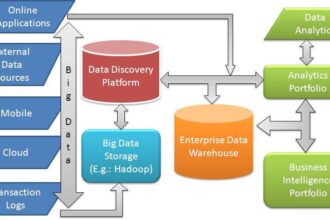Many IT directors have concerns surrounding planning a Cloud strategy. However, the right tools and techniques can help migration and management.

Many IT directors have concerns surrounding planning a Cloud strategy. However, the right tools and techniques can help migration and management.

Developing a Cloud strategy for growth
The Cloud is becoming an all-encompassing presence on the Internet. Whether it’s public, private or hosted, your organisation will undoubtedly be under pressure to not only adopt some form of Cloud strategy to keep up with competitors but will also increasingly experience internal pressures to adopt new tools and techniques such as continual integration tools and concepts such as containers.
Nevertheless, some CiSOs and IT directors may be reluctant to adopt a Cloud strategy and migrate their data. If this is still your view, take a look at how the best in class are making progress in this area, how a strong Cloud strategy could help your organisation, and the benefits you could gain as a result.
Managing a Hybrid Cloud
Hybrid Clouds are increasingly occurring as organisations begin to shift some of their data to public Cloud providers, while keeping other data private. Cloud adoption is attractive to organisations as it enables self-service to IT resources. It boosts efficiencies across the organisation and can drive up revenue. What many organisations fail to detect during initial adoption is the need for Cloud strategies to be managed effectively.
As software becomes available to a wider group through the Cloud, the risks associated with compliance, security and governance all increase. As a result, IT teams need to ensure they remain in control when running applications in the Cloud.
We suggest using an Infrastructure-as-a-Service (IaaS) solution coupled with managed services solutions that provide control of everything from installation, to training staff. The solution can manage mixed infrastructures, so is a strong option for data that is partially in-house and partially stored on a public Cloud.
Those looking into working with Cloud providers should research the STAR certification programme, delivered by the CSA, for vendors of products and services which are audited to provide assured levels of security conformity.
Securing Your Data
As organisations begin to harness the power of Open Source Software (OSS) and Cloud – particularly in combination – concerns about the security of their data are maximised. IT directors may fear there is no standardisation or best practice for secure systems management. For teams deploying Linux for example, security standards need to be applied across design, deployment and maintenance.
With this in mind, IT directors and their teams need to use a Standard Operating Environment (SOE) that allows systems to be deployed quickly and consistently in a secure manner. This can be strengthened through a Standard Operating Environment Management Platform (SOEMP) that enables administrators to automate repetitive tasks and actively manage security. Finally, organisations should look to implement a best practice system management process, which can include tightening network and user access, as well as reviewing policies and procedures surrounding data at regular intervals.
Maintaining a Linux environment appropriately will enable IT directors to address security concerns and keep their data protected.
Key Considerations When You Choose Linux
Around 80% of the web runs on Linux: OSS (sometimes free) that enables you to extend your infrastructure without worrying about licence issues. Migrating your data to a Managed Services Provider can relieve you of the pressure surrounding management and data security. But you must ensure that you prioritise Security and Service Level Agreements questions when speaking to any provider. Most importantly, partner with a provider who has experience in scale-out Cloud, Linux, system management technologies, professional services , DevOps and managed services.
Takeaways:
- Consider your strategy for moving your data towards a Cloud environment
- Ensure that you identify and understand your data profile and have a policy in place for protecting it
- Choose a strategy that allows you to extend your platform securely








